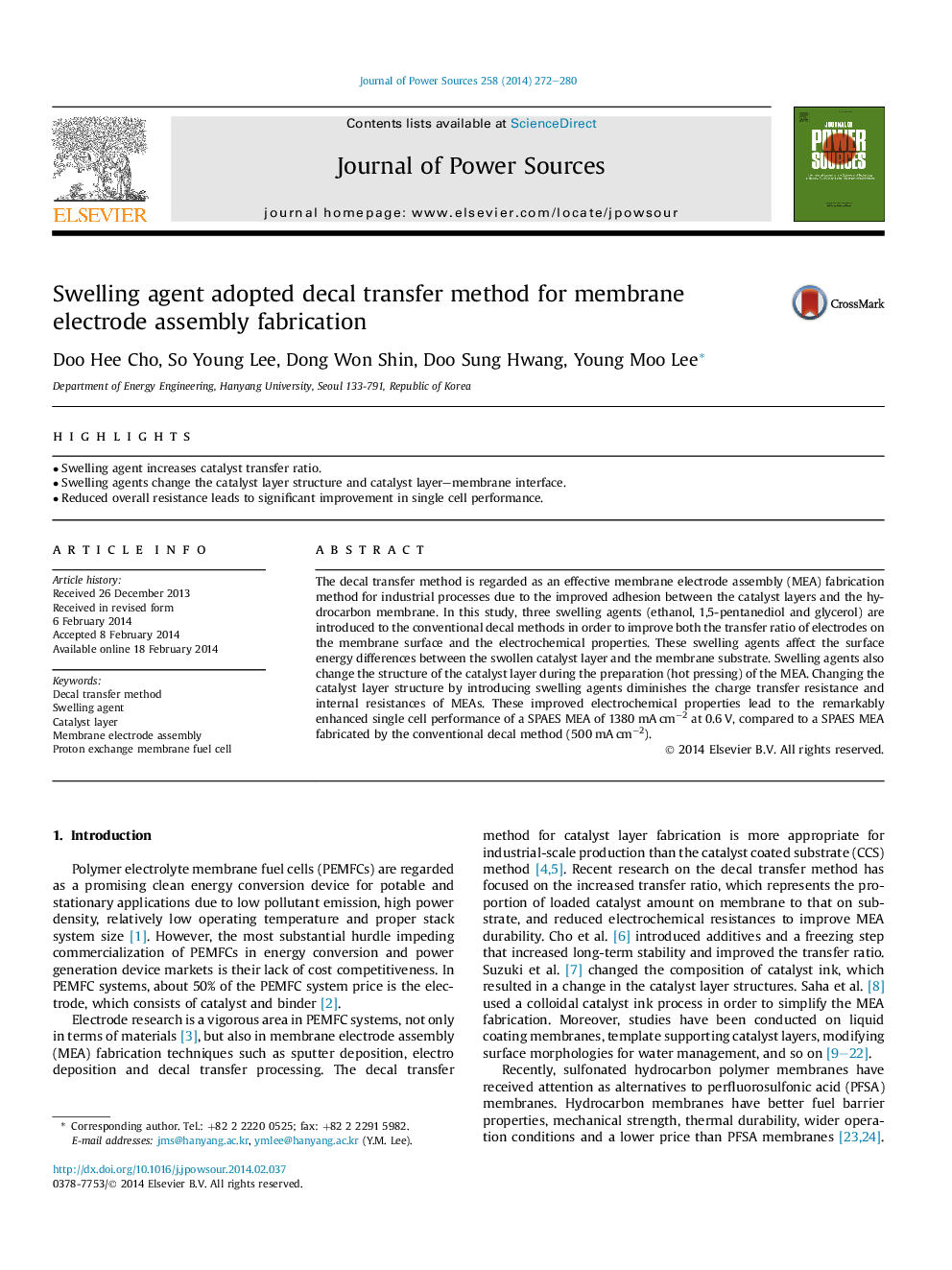| Article ID | Journal | Published Year | Pages | File Type |
|---|---|---|---|---|
| 7736666 | Journal of Power Sources | 2014 | 9 Pages |
Abstract
The decal transfer method is regarded as an effective membrane electrode assembly (MEA) fabrication method for industrial processes due to the improved adhesion between the catalyst layers and the hydrocarbon membrane. In this study, three swelling agents (ethanol, 1,5-pentanediol and glycerol) are introduced to the conventional decal methods in order to improve both the transfer ratio of electrodes on the membrane surface and the electrochemical properties. These swelling agents affect the surface energy differences between the swollen catalyst layer and the membrane substrate. Swelling agents also change the structure of the catalyst layer during the preparation (hot pressing) of the MEA. Changing the catalyst layer structure by introducing swelling agents diminishes the charge transfer resistance and internal resistances of MEAs. These improved electrochemical properties lead to the remarkably enhanced single cell performance of a SPAES MEA of 1380Â mAÂ cmâ2 at 0.6Â V, compared to a SPAES MEA fabricated by the conventional decal method (500Â mAÂ cmâ2).
Keywords
Related Topics
Physical Sciences and Engineering
Chemistry
Electrochemistry
Authors
Doo Hee Cho, So Young Lee, Dong Won Shin, Doo Sung Hwang, Young Moo Lee,
